yeovil at war
AuxiliaRY / nATIONAL fIRE sERVICE
Yeovil's Wartime Fire Brigade
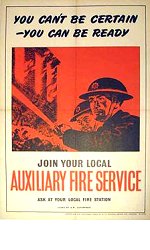 In 1938, as the
Government
prepared for
what appeared to
be inevitable
conflict and
that such
conflict would
almost certainly
involve the use
of bombing from
the air, each
Fire Authority
was required to
form an
Auxiliary Fire
Service (AFS),
under the
direction of the
local Chief Fire
Officer, but
whose role was
solely to
prepare for the
eventuality of
war and for
dealing with
fires that would
follow an air
raid.
In 1938, as the
Government
prepared for
what appeared to
be inevitable
conflict and
that such
conflict would
almost certainly
involve the use
of bombing from
the air, each
Fire Authority
was required to
form an
Auxiliary Fire
Service (AFS),
under the
direction of the
local Chief Fire
Officer, but
whose role was
solely to
prepare for the
eventuality of
war and for
dealing with
fires that would
follow an air
raid.
Members of the AFS were unpaid part-time volunteers, but could be called up for whole-time paid service if necessary. This was very similar to the wartime Police Special Constabulary.
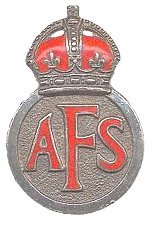 The part-time
firemen of the
AFS were
recognised by a
lapel badge,
seen here, first
issued in August
1938 after
completion of
sixty hours
training,
reduced in June
1939 to one
month of
membership. The
badge was made
of sterling
silver until
June 1939 when
it became white
metal.
The part-time
firemen of the
AFS were
recognised by a
lapel badge,
seen here, first
issued in August
1938 after
completion of
sixty hours
training,
reduced in June
1939 to one
month of
membership. The
badge was made
of sterling
silver until
June 1939 when
it became white
metal.
To overcome some
of the earlier
problems the
fire service was
again
re-organised
into the
National Fire
Service (NFS)
bringing
together the
16,000-plus fire
brigades within
the country.
This force came
into existence
on the 18th
August 1941 and
all brigade and
AFS personnel
were transferred
into it. The
service was
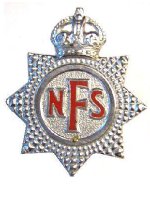 responsible,
through regions,
to the Home
Office directly
which meant that
the chain of
command was much
simpler and the
standardisation
of training and
equipment could
be more
efficient.
responsible,
through regions,
to the Home
Office directly
which meant that
the chain of
command was much
simpler and the
standardisation
of training and
equipment could
be more
efficient.
|
See also |
-
Fire
Watchers
and Fire
Guards |
Gallery
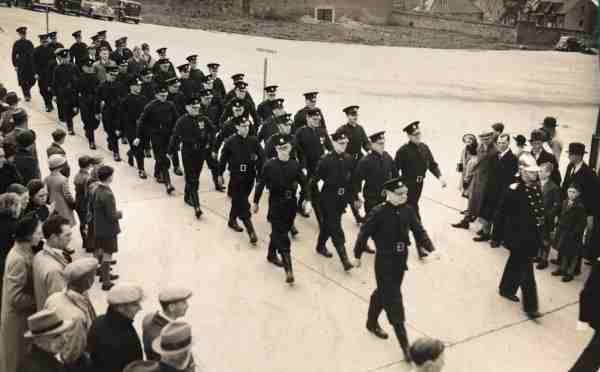
Courtesy of Bob
Banfield
The Yeovil Auxiliary Fire Service parade on 23 April 1939 in Petters Way (and photographed from outside the law courts).
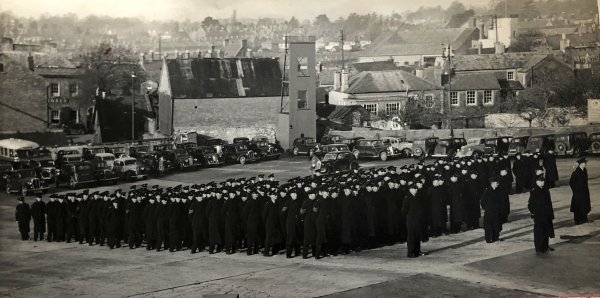
Courtesy of Jack
Sweet
The 1946 disbandment parade of the wartime Yeovil Division of Special Constables in the Petters Way car park.
Yes, I know they're not firemen, but at the centre is the Auxiliary Fire Service practice tower that appears in several photographs of Auxiliary Fire Service personnel below. The houses behind that are in Hendford - at the left is glimpsed the Manor Hotel and at top right is Seaton's tower.
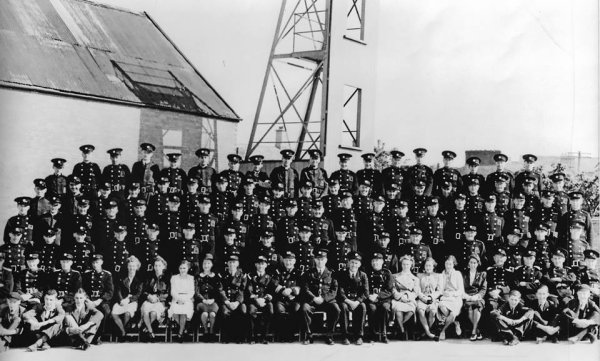
Yeovil Fire Brigade and the Auxiliary Fire Service, 1940. Many thanks to Eric Taylor who wrote "My father is here, second row down from the top second person in from the left. His name was George Taylor and lived at 12 South Street. He worked for JH Swaffield & Sons in South Street at the time as an agricultural engineer."
This photograph, like several below, was taken in what is now Petters Way car park (where the market used to be held, adjoining South Street). The training tower behind was used to hang the hoses from.
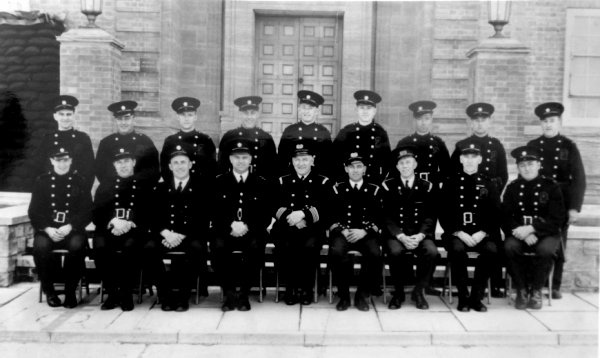
Courtesy of Jack
Sweet
Officers and Leading Firemen of the Yeovil Auxiliary Fire Service photographed in 1940 outside the Courts building in Petters Way. Patrol Officer Charles Gillard is seated at far right.
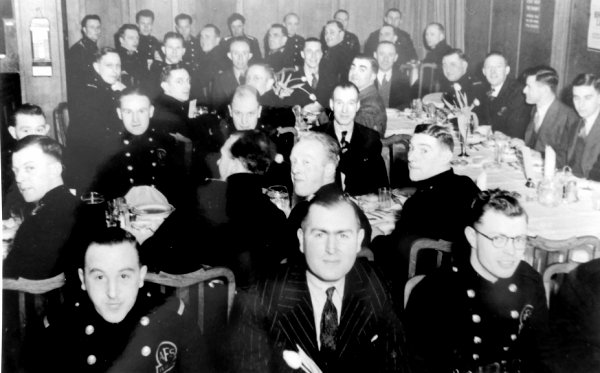
Courtesy of Jack
Sweet
Yeovil Auxiliary Fire Service dinner, circa 1940. Charlie Gillard is at the top table, 4th from right.
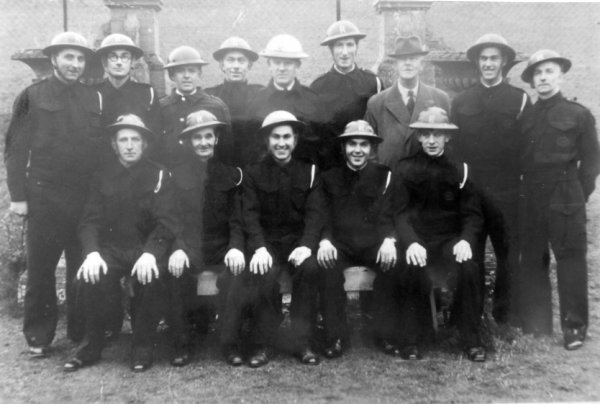
Courtesy of Jack
Sweet
The AFS Heavy Rescue Crew photographed in the terraced garden at the rear of Hendford Manor, around 1940-41.
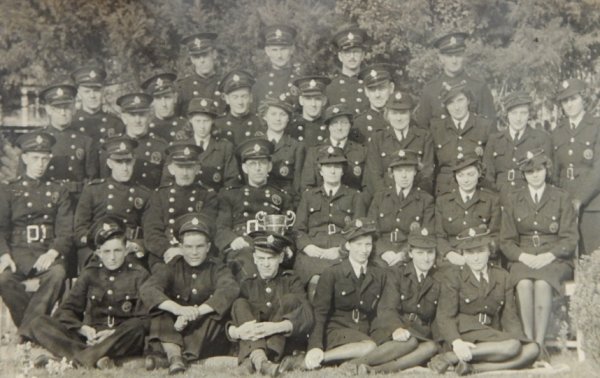
Courtesy of Jack
Sweet
Members of the Yeovil Auxiliary Fire Service - 18 men and 14 ladies - pose for a photograph.

Courtesy of
Paul Pickford
(colourised)
This photograph dates to 1952 (when the film "Red Skies of Montana" was released). Paul noted "This is the additional building the Fire Brigade used near the car park in Petters Way. The building was situated at the bottom of the market site at the top of Petters Way facing out onto South Street. It was most likely constructed during the Second World War by members of the National Fire Service (NFS) to house the additional appliances that were stationed at Yeovil at the time. The appliance on the left is a Dennis F7 and was one of the first new Fire Engines delivered to the newly formed brigade. The one on the right is a wartime Austin 60Ft hand operated Turntable Ladder which remained in Service at Yeovil until 1971."
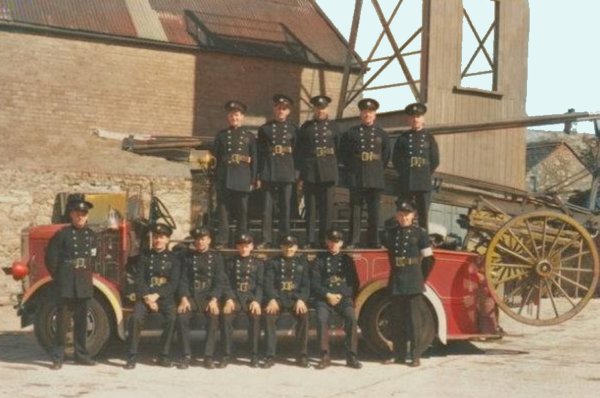
This
photograph
features in
my 2024 book "Yeovil,
the Home
Front,
1939-1945"
In a colourised photograph, men of the Yeovil Division of the Auxiliary / National Fire Service, 1940-42, by the Patters Way training tower. Thanks to Simon Rowley "Leyland FK6 pump escape, BYC 145, that was supplied to the brigade in May 1936. This appliance survives, fully restored, in the care of the Devon and Somerset Fire and Rescue Service."

The signatures on the reverse of the above photograph.
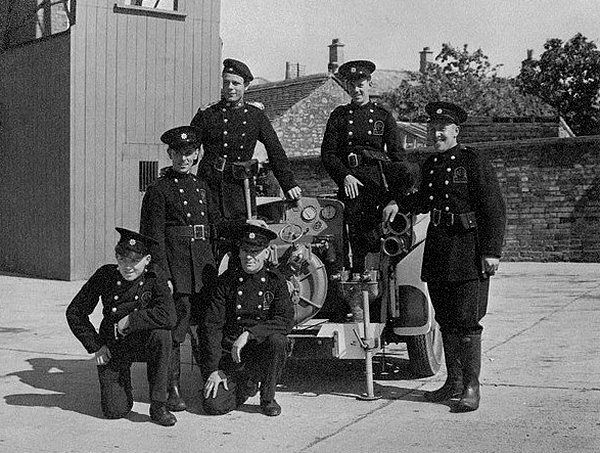
Courtesy of
Roger McElliott
Men of Yeovil's Auxiliary Fire Service personnel pose with their water tender (sorry, I don't know which type) by the Petters Way training tower.
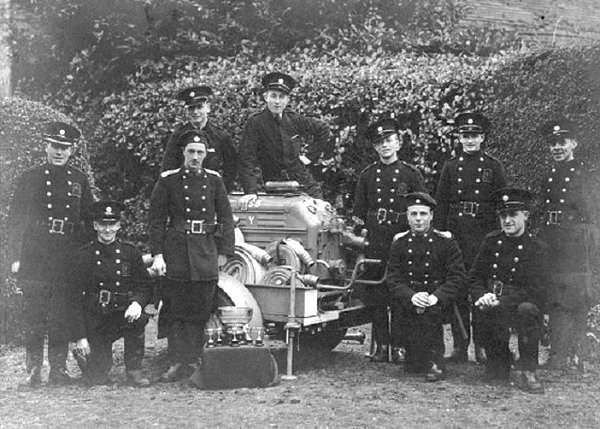
Courtesy of
Roger McElliott
Same equipment, different location, different crew of Yeovil's Auxiliary Fire Service personnel.
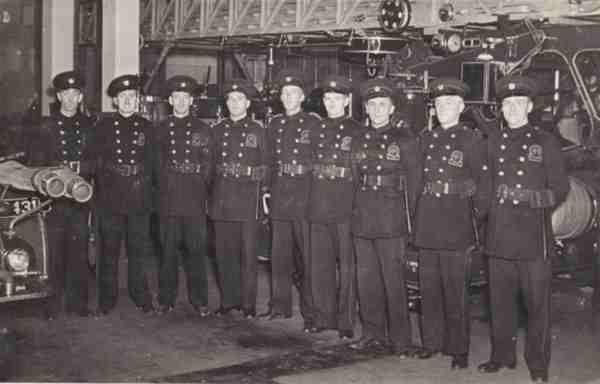
Courtesy of
Nigel Vine
A crew of Yeovil's Auxiliary Fire Service personnel, circa 1940. This photograph must date to before May 1941 as the men are all wearing AFS badges. At the extreme right is Leading Fireman Wilfred Jenvey, who was stationed in Yeovil throughout the war. Since he lived at 118 Mudford Road, this photo may have been taken in the Hundredstone AFS Station.
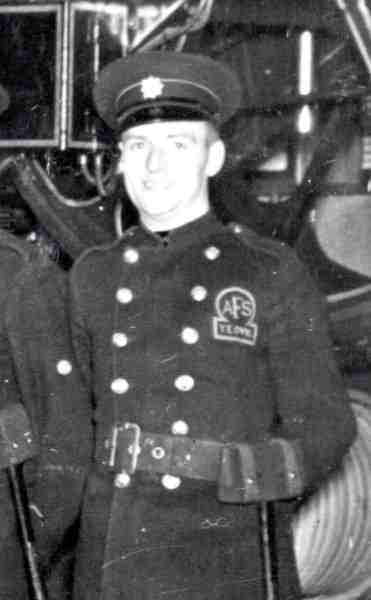
Courtesy of
Nigel Vine
Leading Fireman
Wilfred Jenvey,
enlarged from
the previous
photograph,
showing the
Auxiliary Fire
Service uniform
and the special
"AFS Yeovil"
badge.
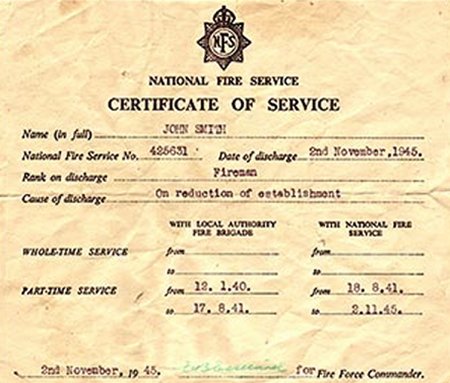
Certificates of Service were issued by the National Fire Service when the service was down-sized after the war.
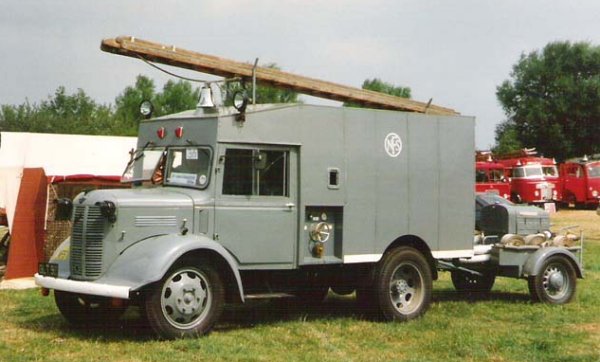
During the war the National Fire Service issued Yeovil with at least two Austin K2 auxiliary towing vehicles (ATV) coupled with trailer pumps and one of these was probably at a sub-station. This illustration is of an Austin K2 ATV in National Fire Service livery, towing a Coventry Climax FSM-Type trailer fire pump.
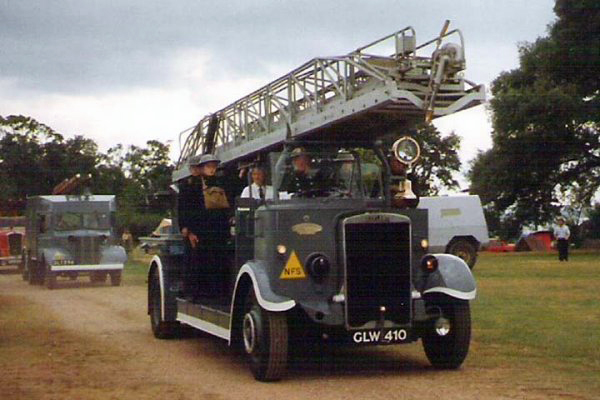
In 1943 Yeovil was issued with a Leyland Beaver with a 100ft Merryweather turntable ladder similar to this photograph. This appliance stayed at Yeovil until 1955 when it was sent to Cheltenham and Yeovil received an Austin K4 with a Merryweather 60ft turntable ladder that had initially been issued by the NFS to Barnstaple. This vehicle was preserved.
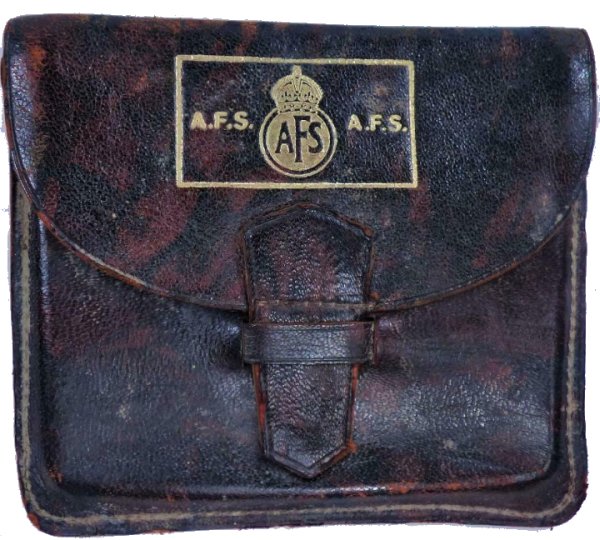
A small (4" x 3½" - 100 x 90mm) leather AFS wallet. Whether this was issued officially or not is unknown.